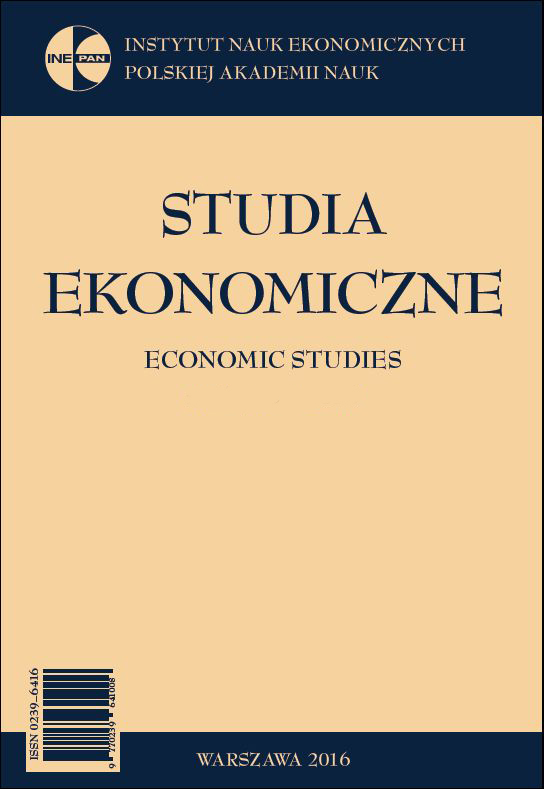Efficiency of a Two–Stage Teaching Process in Public Institutes of Technology
Efficiency of a Two–Stage Teaching Process in Public Institutes of Technology
Author(s): Łukasz Brzezicki, Piotr PietrzakSubject(s): Business Economy / Management
Published by: Instytut Nauk Ekonomicznych Polskiej Akademii Nauk
Keywords: higher education; efficiency; DEA
Summary/Abstract: The aim of the paper is to examine the relation between the domestic credit instability and the rate of inflation. Using random-effects panel logistic regression on annual data for a sample of around 160 countries over up to four decades we show that low inflation makes sizable deviations of the credit-to-GDP ratio from the trend more likely, thereby posing a dilemma for the central bank’s choice of policy goals. We find that macroprudential policies are counterproductive as they do not reduce the probability of surpassing the credit-to-GDP gap threshold of 2 and increase the probability of hitting the upper threshold of 10 in advanced economies. The use of financial institutions-targeted instruments seems to tighten the link between credit and output gaps in advanced economiesThe article attempted to simultaneously evaluate the efficiency of two stages (that is, student education and completion of education by the graduates) of the educational process in the technological institutes of higher education. An assessment of the efficiency of the teaching activity in 18 public institutes of technology in 2014–2015 was presented by the DEA method. The study used the DEA relational model, which assumes, on the one hand, the existence of a relationship between the two stages in the whole instruction process and, on the other, taking into account intermediates which link the two stages. The use of this model allows us to determine the causes of inefficiency more accurately than in the classical models. The output of the instruction process was measured by the number of graduates and the input was assumed by the number of academic teachers, non-academic staff, and the total value of the didactic work. Whereas, as a result of the first stage, which was also the input to the second stage, the number of students (output/input) was accepted. Both the efficiency of the first and second stage and the overall efficiency were estimated. The results show that efficiency varies between the two stages. Even if the general didactic activity of higher education was found inefficient, in some cases its individual stages proved to be efficient
Journal: Studia Ekonomiczne
- Issue Year: 2017
- Issue No: 2
- Page Range: 221-238
- Page Count: 18
- Language: English

